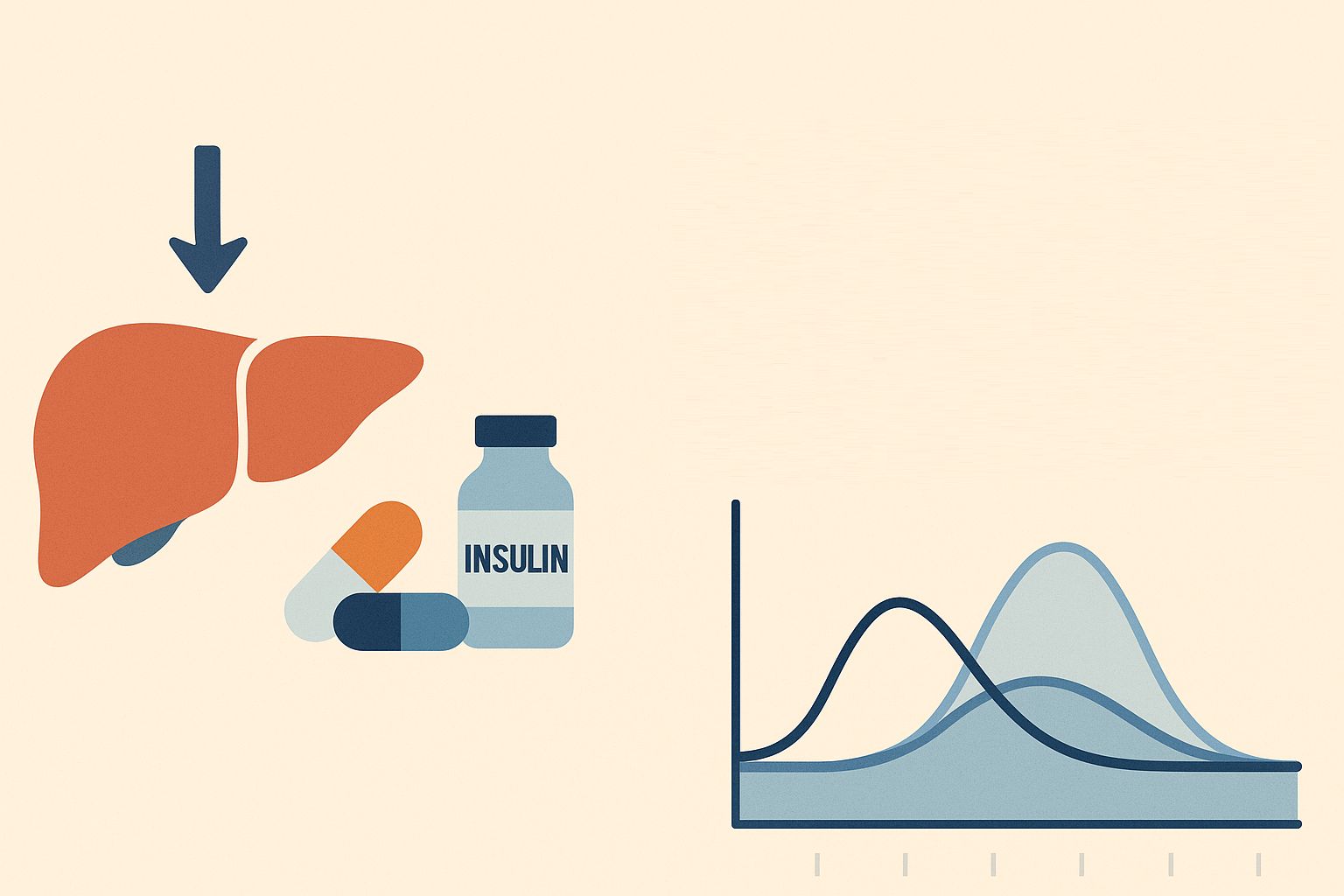
The article discusses the evolving yet critical role of basal insulin (BI) in managing type 2 diabetes mellitus (T2DM) in the era of newer glucose-lowering agents such as GLP-1 receptor agonists (GLP-1RAs) and SGLT2 inhibitors (SGLT2is). While these newer therapies offer advantages like minimal titration, weight reduction, and cardiovascular/renal benefits, BI continues to serve as a vital therapeutic tool, particularly when other medications fail to maintain adequate glucose control or in scenarios like metabolic stress, pregnancy, latent autoimmune diabetes (LADA), or comorbidity-driven limitations.
Basal insulin helps regulate plasma glucose by suppressing hepatic glucose production and is often needed to achieve target HbA1c levels, especially in patients with progressing insulin deficiency. Its use is foundational in precision medicine, allowing for a tailored approach in managing the heterogeneous T2DM population.
The article emphasizes that combining BI with newer agents can be particularly effective, as they operate through different mechanisms. This synergy allows for lower dosing, improved adherence, fewer side effects, and overall better outcomes. Despite shifting trends away from insulin-first regimens, the pathophysiological rationale for BI remains strong, with robust evidence supporting its safety and efficacy—most notably its low risk of hypoglycemia when properly managed.
The authors argue that basal insulin should not be sidelined but seen as a flexible and reliable component of long-term T2DM care, especially when integrated strategically with newer therapies. This combination approach enables clinicians to address diverse patient profiles and evolving needs more effectively, reinforcing BI’s enduring relevance in modern diabetes management.

